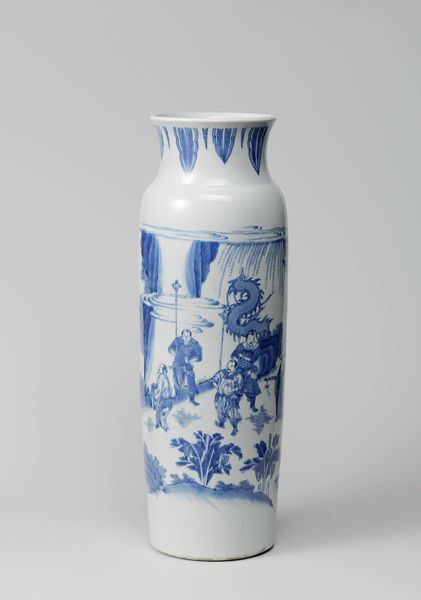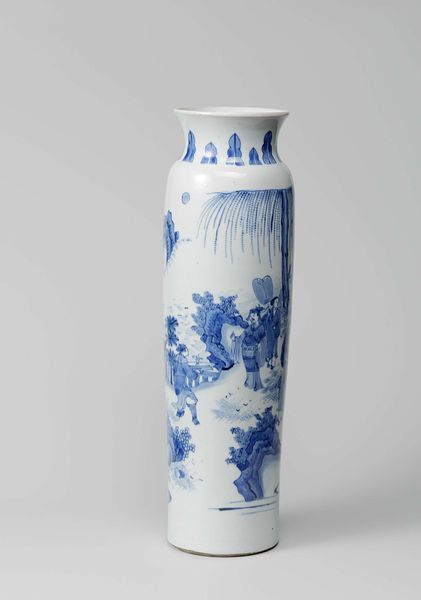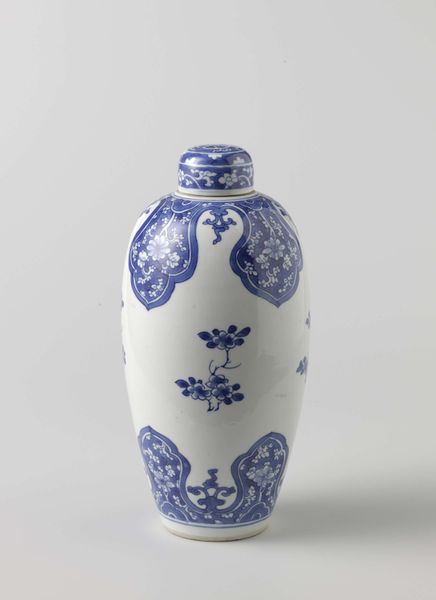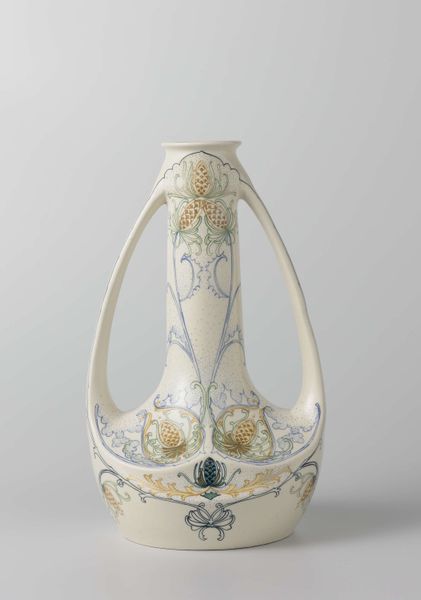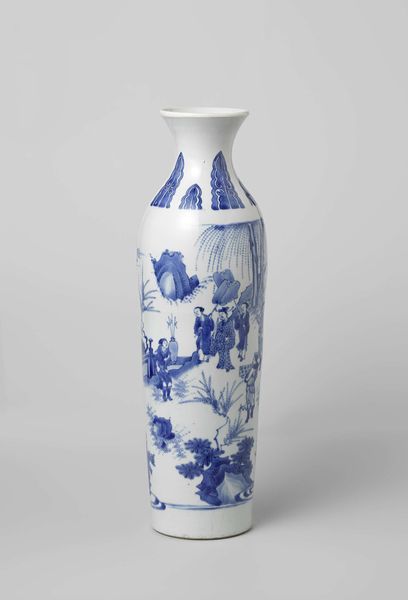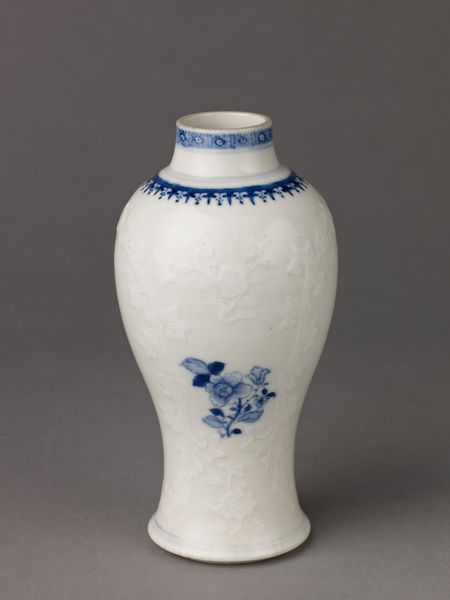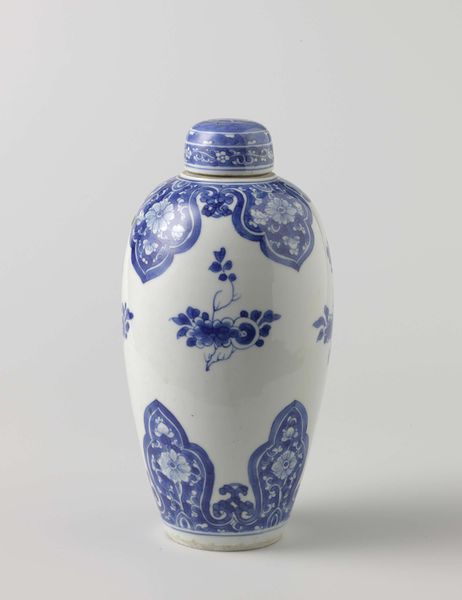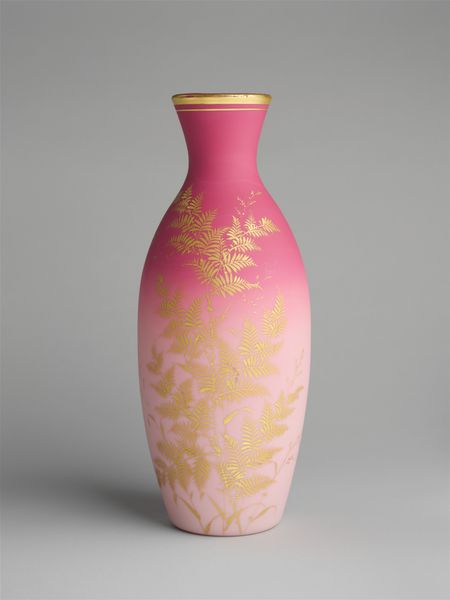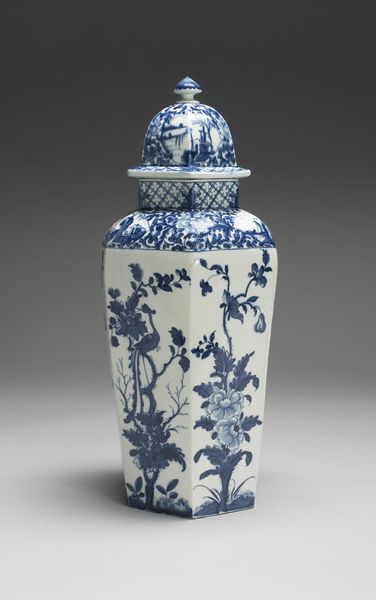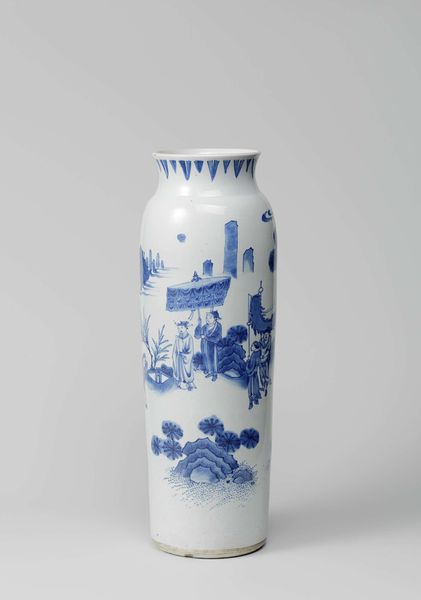
ceramic, porcelain
#
art-nouveau
#
ceramic
#
porcelain
#
ceramic
#
decorative-art
Dimensions: height 23 cm, diameter 3.7 cm, diameter 7.8 cm, diameter 4.7 cm
Copyright: Rijks Museum: Open Domain
Editor: Here we have "Vase with flower sprays" by the Königliche Porzellan Manufaktur, dating from around 1909 to 1911. It's a porcelain vase with golden decoration. I find the contrast between the delicate floral pattern and the vase's simple shape quite striking. How do you interpret this work? Curator: The vase really exemplifies the tensions within the Art Nouveau movement. We see a clear rejection of industrial mass production in its handcrafted porcelain and individualized decoration. But what statements does the vase itself make about the sociopolitical currents of the early 20th century, particularly concerning gender roles and domesticity? Do you see this idealized naturalism as celebratory, or as masking something else? Editor: Masking something else? You mean, is it more than just a pretty vase? Curator: Exactly. The Art Nouveau style often romanticized the natural world, but this could also serve to reinforce bourgeois ideals of femininity, confining women to the domestic sphere as symbols of beauty and purity, much like these floral motifs. Does the vase’s elegance and refinement seem like a celebration of natural beauty, or a subtle form of control and expectation? Editor: I see what you mean. The vase is beautiful, but that beauty could also be reinforcing certain ideas about women and their place in society. I never thought about it that way. Curator: And the historical context matters, too. Think about the social and political movements happening at the time, the fight for suffrage and greater equality. This vase can be seen as either a refuge from or an active participant in that landscape. Editor: That's a powerful perspective. I now realize I was appreciating the aesthetic qualities without fully considering its implications in the broader societal narrative. Curator: Precisely! Art doesn't exist in a vacuum. Considering it in the light of the social landscape allows for a much richer understanding. Editor: I'll definitely remember that as I continue exploring art history! Thanks!
Comments
No comments
Be the first to comment and join the conversation on the ultimate creative platform.
